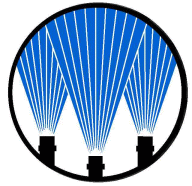
 |
SPRAYING SYSTEMS
(TAIWAN) LTD.
系統噴霧有限公司 (台灣)
|
|
|
認識噴嘴 |
|
|
|
|
|
|
認識噴嘴 > 噴霧粒子大小的測定
粒子大小的測定
我們使用的是世界頂尖品牌所製造的最新儀器是以雷射反折原理作出的粒度分布測定装置。測定法也從初期波形反射、變成現在採用的根據Mie理論的雷射光散亂方式、可以計算出粒子的絕對值。測定範圍也擴大到0.05∼8000μm。
How methods and instruments have kept pace with changing technology
By spraying water into a pan of oil and shuttering the spray, it is possible to count and size individual drops using a microscope. This technique is still used by some researchers. Problems with this method involve drop coalescence, inadequate sample size and the fact that very small drops will be deflected away from the oil by air currents at the surface due to the spray velocity. Also, larger drops can and do break-up from impacting the surface. The same type of method is used when spraying a dye onto a stationary card, or water onto liquid sensitive paper. Again, the small drops might be deflected away from the target and the large drops can break-up from the impact. Data collected by these "intrusive" methods depends on a number of uncontrolled variables making such test results generally non-repeatable. While drop size data was being collected in the early 1950's using methods such as flash photography, probably the first real breakthrough in drop sizing technology was the development in 1961 of an automated imaging analyzer (Figure 5).1 1 The Electronic Imaging Analyzer was developed at Spraying Systems Co. by Dr. Verne Dietrich and built by the Dage Division of TRW, Michigan City, Indiana. The design was awarded U.S. Patent 3275733 in September of 1966, and is currently in its second generation.
Basically, the Electronic Imaging Analyzer incorporates the spatial measurement technique using a strobe light to illuminate the spray and record the image with a vidicon tube. The image is scanned, and the drops are sized and separated into different classes. Resulting data can be mathematically corrected using velocity data to give a flux distribution. Sources of error early in the development of this device included blurring, depth of field variations and vidicon tube saturation. These sources were recognized and corrected. The imaging type analyzer is still actively promoted by some nozzle manufacturers. The limited availability of this type of instrument, however, prevents independent researchers and other interested members of the drop size analyzer community from verifying data arrived at from a particular test or comparing performance from similar designs. More recently the development of commercially available drop size analyzers makes it feasible to verify drop size results by independent sources. This new breed of analyzers incorporates lasers, special optics and digital circuitry to minimize imaging error. Some of the more commonly recognized manufacturers of laser measurement instruments include Malvern, Particle Measuring Systems (PMS), and Aerometrics. The following is an analysis of three of their instruments. Malvern Particle Analyzer
Perhaps the biggest source for error with this type of instrument is multiple light scattering. If the spray is too dense, there is a possibility that the scattered light from one drop might be scattered again by other drops further down the beam axis. The Malvern is equipped with an "obscuration level" indicator which can be used to determine if the spray is too dense, but such a determination is often difficult. To circumvent this in the lab, the technician typically moves the nozzle farther away or uses special shielding to permit only a portion of the spray to enter the sample area. Particle Measuring Systems
The PMS OAP Grey Scale probes are extremely advanced and have extensive self-diagnostics. These probes will reject drop images which are out of focus or which do not meet a series of other acceptability tests automatically. Problems with PMS units usually center on improper calibration or maintenance. The optics tend to get wet easily and cleaning and alignment require some skill. Also, dense sprays tend to overload the circuitry and sample area reductions are often necessary. Sample area correction factors and drop distribution curve fitting equations are needed and left up to the operator to include in the analysis. Aerometrics
The PDPA uses a low power laser that is split into two beams by utilizing a beam splitter and a frequency module. The two laser beams intersect again into a single beam at the sample volume location. When a drop passes through the intersection region of the two laser beams, an interference fringe pattern is formed by the scattered light. Since the drop is moving, the scatted interference pattern sweeps past the receiver aperture at the Doppler difference frequency which is proportional to the drop velocity. The spatial frequency is inversely proportional to the drop diameter. Aerometrics offers an optional fibre optic probe which isolates the instrument from the spray and eliminates the potential for error due to vibration caused by direct contact with larger capacity sprays. Other drop sizing instruments which are commercially available, generally use lasers and operate on principles which we have previously discussed.
噴嘴類型和流量、噴射壓力、噴霧形狀亦會影響噴霧粒子大小。(一般情形下)
|
|
|||||||||||||||||||||||||||||||||||||||||||||||||||||||||||||||||||||||||||||||||||||||||||||||||||||||||||||||||||
| All Rights Reserved, Copyright(C) Spraying Systems Co., Taiwan2002 |